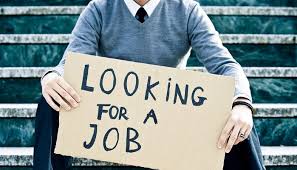State Department refugee office to assume USAID’s disaster aid role, says cabl
Youth unemployment in SA a national crisis – economists

Overall, South Africa’s labour market has failed to gain any meaningful traction over the past year with the unemployment rate, especially for the youth, remaining exceedingly high by global standards, says Stanlib chief economist Kevin Lings in a company note.
“Fundamentally, this reflects the lack of fixed investment spending by the private sector, as well as the sustained low business confidence.”
Statistics South Africa (StatsSA) announced the unemployment figures for the second quarter of 2017 on Monday, which showed that the unemployment rate remained stagnant at a worrying 27.7%.
“This means that South Africa’s official unemployment rate has remained at its highest level since the data series started. The previous record high was 27.1% recorded in the third quarter of 2016,” Lings says.
According to the expanded definition of unemployment, which includes discouraged workers, the unemployment rate is 36.6%, up from 36.4% in the first quarter of 2017.
“In addition, the unemployment rate for the youth younger than 25, using the expanded definition, is a shockingly high 67.4%. Clearly, the rate of youth unemployed has become a national crisis, with significant social, economic and political implications.”
Social tension and anguish
Lings says the high rate of unemployment contributes to the social tension and anguish experienced in South Africa on a daily basis, especially among the youth.
“Increasing employment in South Africa has to be the number one economic, political and social objective, and can only be resolved meaningfully through a concerted and sustained effort to improve skills development as well as encourage private sector fixed investment spending, business development and entrepreneurship.”
Elize Kruger, analyst at NKC African Economics, says in a company note it is clear that the lacklustre economic activity currently characterising the South African economy is unable to sustain the job market.
“Heightened political and policy uncertainties have impacted negatively on the overall economy, but particularly where substantial capital outlays are needed. Thus the large decline in employment in the construction sector (-110,000) could hardly be surprising.”
NKC African Economics expects “meagre economic growth” of only 0.5% in 2017.
“This is wholly inadequate to reduce the country’s high levels of unemployment and inequality. Without the necessary policy intervention to address growth, youth unemployment and education issues, high unemployment is likely to persist into the foreseeable future.”
Acting spokesperson of the South African federation of Trade Unions (Saftu) Patrick Craven said that the statitsics always hide the “human misery” behind them.
“On average every employed worker supports 15 dependents. So 113 000 lost jobs means that well over one and a half million people will suffer financial loss and fall into the growing pool of those living in absolute poverty.”
Saftu noted the number of recent job losses which will impact the next quarter’s results. This include AngloGold Ashanti which plans to cut 8 500 jobs and Sibanye which plans to cut 7 400 jobs. Retailer Pick n Pay announced it would cut 10% of its workforce.













Leave a Reply
Be the First to Comment!
You must be logged in to post a comment.
You must be logged in to post a comment.